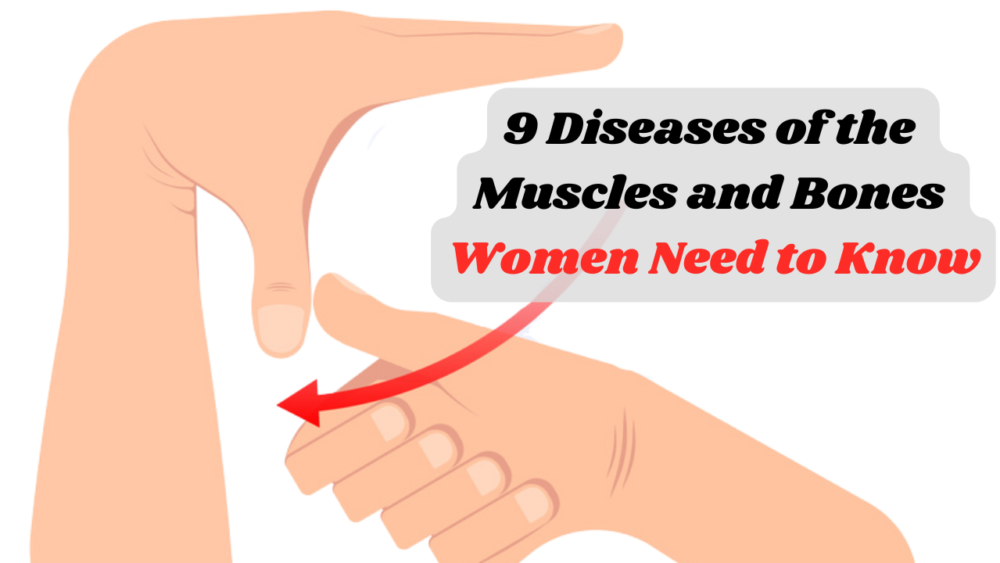The musculoskeletal system is made up of the body’s bones, muscles, tendons, ligaments, joints, and cartilage. As explained by Cleveland Clinic, each part of the system works together to support your body’s weight and help you move.
When faced with injuries, disease, or aging, parts of the musculoskeletal system can be thrown out of sorts, causing pain, stiffness, and problems with movement and function. For some people, the cause of such symptoms is a congenital anomaly that was present from birth.
Below are nine muscle and bone diseases to be aware of, as outlined by the National Institute of Arthritis and Musculoskeletal and Skin Diseases. As is true with every condition, proper and early diagnosis is the key to prompt treatment, and therefore a better outcome.
Fibromyalgia
Characterized by chronic, widespread pain all over the body, fibromyalgia (or fibromyalgia syndrome) is a disorder accompanied by fatigue, mood and/or memory problems. The hallmark symptom of fibromyalgia is deep muscle pain or weakness throughout the body, but other symptoms can include brain fog, mood problems, sensory overload, and Irritable Bowel Syndrome.
Fibrous Dysplasia
According to NIAMS, fibrous dysplasia occurs when healthy bone is replaced with other types of tissue. As a result, bones may become weak or malformed, or they may even break. Bone pain may occur due to fractures, or fibrous tissue changes in the bones.
Marfan Syndrome
Marfan syndrome is often a genetic disease that a person inherits from their parents. It disrupts healthy development of connective tissue, which supports many parts of the body. Symptoms vary greatly, but can include abdominal pain, headaches, and vision changes.
Osteogenesis Imperfecta (Brittle bone disease)
Brittle bone disease is a genetic condition that causes weakening of the bones, resulting in easy breakage. Such breakages can occur even with no obvious cause, like an injury. There are multiple types of brittle bone disease, and symptoms vary among them.
Osteonecrosis
Osteonecrosis occurs when blood flow to part of a bone is disrupted, causing the bone to die and collapse. Often, there are no symptoms at first, but as the disease progresses, a patient might begin to feel pain in weight-bearing bones.
Osteopetrosis
Osteopetrosis is a rare disorder that causes abnormal growth in the bones. They may become overly dense, misshapen, and large, and as a result, brittle. Such changes can cause problems in other places of the body; for example, overgrowth of the skull can put pressure on the nerves, leading to vision loss, hearing loss, and facial paralysis.
Osteoporosis
According to the Cleveland Clinic, osteoporosis, which means ‘porous bone,’ is a disease that weakens bones and increases a person’s risk of sudden bone fractures. Symptoms are often subtle or even nonexistent until a painful breakage occurs.
Paget’s disease of bone
Paget’s disease is a disorder that causes bones to grow too large and weaken. Many people with the disease are unaware they have it. The most common symptom is bone pain, which is frequently mistaken for arthritis or other pain-causing disorders. Fortunately, progression is usually slow, and the disease does not spread to normal bones.
Spinal Stenosis
Spinal stenosis is the narrowing of the spine. The condition can cause pain, numbness, and weakness throughout the body due to pressure on the spinal cord and nerves. Symptoms vary depending on the location of the narrowing.
To help keep your musculoskeletal system healthy, Cleveland Clinic recommends paying attention to your overall health. This includes eating a balanced diet, maintaining a healthy weight, exercising regularly, and attending regular checkups with your doctor.
For more information, visit Cleveland Clinic’s website, and the National Institute of Arthritis and Musculoskeletal and Skin Diseases.



